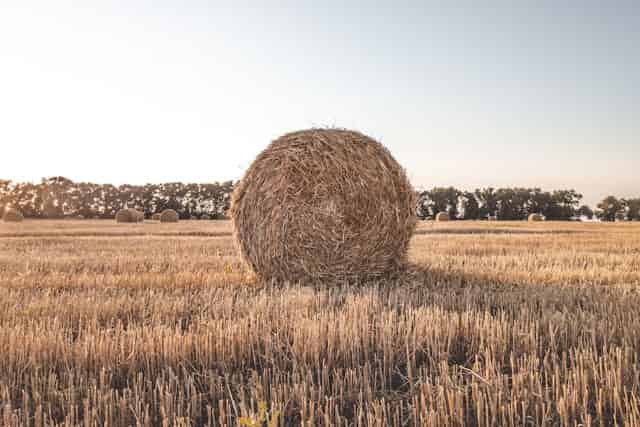Hay Bale Sizes and Types: Which One is Right for Your Farm?
Selecting the right hay bale size and type is essential for efficient feeding, storage, and transportation. Whether you have a small homestead, a large commercial farm, or a horse boarding facility, understanding the different hay bale options can help you maximize convenience and minimize waste.

(circular bale of hay in the middle of a hay field,)
Types of Hay Bales and Their Benefits
Hay bales come in various shapes and sizes, each with its own advantages depending on your livestock needs, available storage, and handling capabilities.
1. Small Square Bales
Size & Weight: Typically 35–75 lbs, measuring around 14” x 18” x 36”
Best For: Small farms, horse owners, and easy-handling situations
Benefits:
- Ideal for manual feeding since they are easy to lift and transport
- Easier to store in barns and sheds
- Perfect for horses, goats, and small livestock that require portioned feeding
- Reduces waste when feeding smaller animals
2. Large Square Bales
Size & Weight: 500–1,000 lbs, measuring around 3’ x 3’ x 8’
Best For: Large farms, dairy operations, and commercial livestock feeding
Benefits:
- More compact than round bales, making them easier to stack and transport
- Great for large-scale feeding operations that require bulk hay
- Requires a tractor or hay forks for movement and feeding
3. Round Bales
Size & Weight: 500–1,500 lbs, typically around 4-6 feet in diameter
Best For: Cattle operations, large pastures, and farms with mechanical feeding equipment
Benefits:
- Best suited for outdoor storage, as they shed water more effectively than square bales
- More cost-effective for feeding large herds
- Less labor-intensive since they can be fed with hay rings or automatic bale feeders
Factors to Consider When Choosing Hay Bales
1. Farm Size & Storage Space
If you have limited storage, small square bales may be the best option as they can be stacked efficiently in a barn. Large square bales require more structured storage, while round bales can be left outside if properly covered.
2. Livestock Type
- Horses & Goats: Prefer small square bales for portion control and freshness
- Cattle & Sheep: Can thrive on round bales or large square bales for bulk feeding
- Dairy Farms: Often use large square bales for efficiency in feeding large groups
3. Feeding Method
If you manually feed your livestock, small square bales are ideal. For mechanized feeding, round and large square bales provide convenience and reduce labor.
Conclusion
Choosing the right hay bale size depends on your farm’s needs, livestock type, and storage capabilities. At Ohana Farms, we offer high-quality hay bales in various sizes to fit every farm’s requirements. Contact us today to find the best hay for your livestock!

